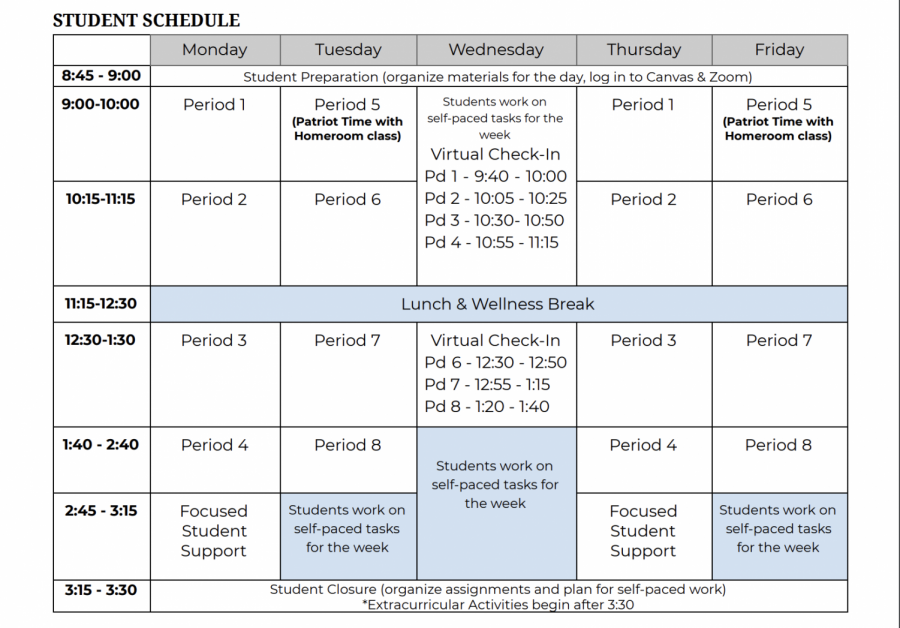New Schedule: Adopt It or Drop It
Ever since COVID-19 first arrived in Maryland, online learning has been the only way to maintain a safe environment for both students and teachers. A whole summer has gone by and not much has changed. While positives in this situation are hard to come by, the new school schedule that has been adopted has its benefits and should continue to be used after the dust has cleared.
Students love sleeping in, and that shouldn’t come as a surprise. According to UCLA Health, “The average teen needs about nine hours of sleep each night to feel alert and well rested,” which is an unrealistic expectation for teenagers. Seeing how school formerly began at 7:45 a.m., students would have needed to go to sleep at around 10 p.m. to get the rest they need, and that doesn’t even account for the time it takes for students to get ready in the morning. On the other hand, a schedule that pushes back the start time by more than an hour allots students more time to get some rest.
By only having four hour-long periods in a day, teachers are able to create more detailed and collaborative lessons, and students retain more from said lessons. Having to stomach seven different classes in a single school day is exhausting, and students aren’t as likely to remember what they learned. According to the Ebbinghaus Forgetting Curve, students forget up to 95% of what they learn in high school after only three days, so making the most of students’ time goes a long way.
Another factor is homework, one of the largest stresses in a teenager’s life. According to a poll done by US News, “Teens reported spending, on average, more than three hours on homework each school night.” Combined with extracurricular activities and whatever else is going on in a high school student’s life, it can be difficult to find time to get it all done. By having only four classes in a day with a day in between, students would not only be assigned less to do per night, but would also have more time to complete them.
Despite the fact classes wouldn’t meet every day, it would be advantageous toward both parties to adopt this new schedule full time. Students would be better rested before arriving at school, teachers would be able to create more engagement-focused lesson plans, and stress caused by homework would be diminished, allowing students to focus on more than just their academic career.
Your donation will support the student journalists of Thomas S. Wootton High School. Your contribution will allow us to purchase equipment and cover our annual website hosting costs.
Luke Jordan is a 2022 graduate.







